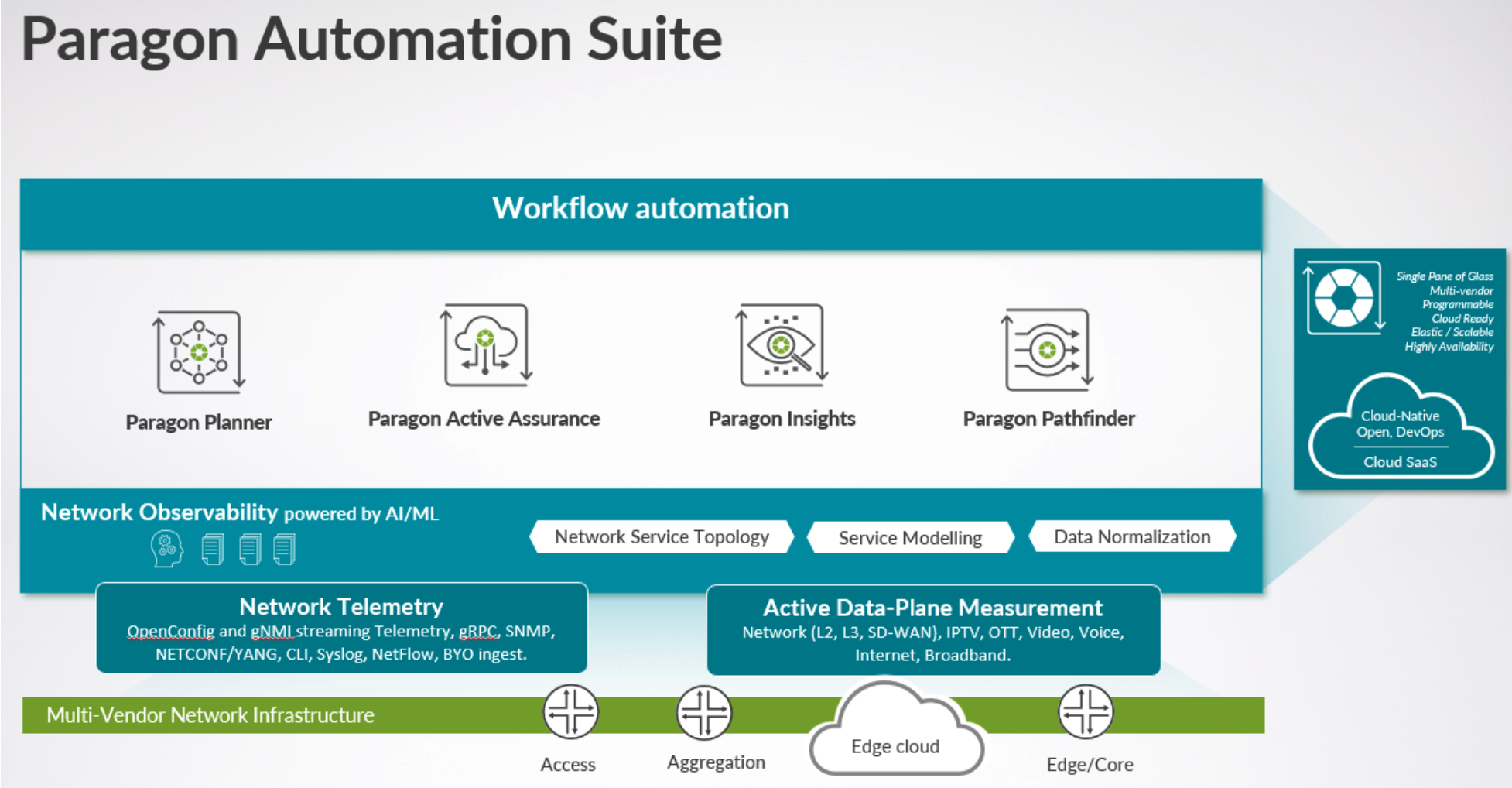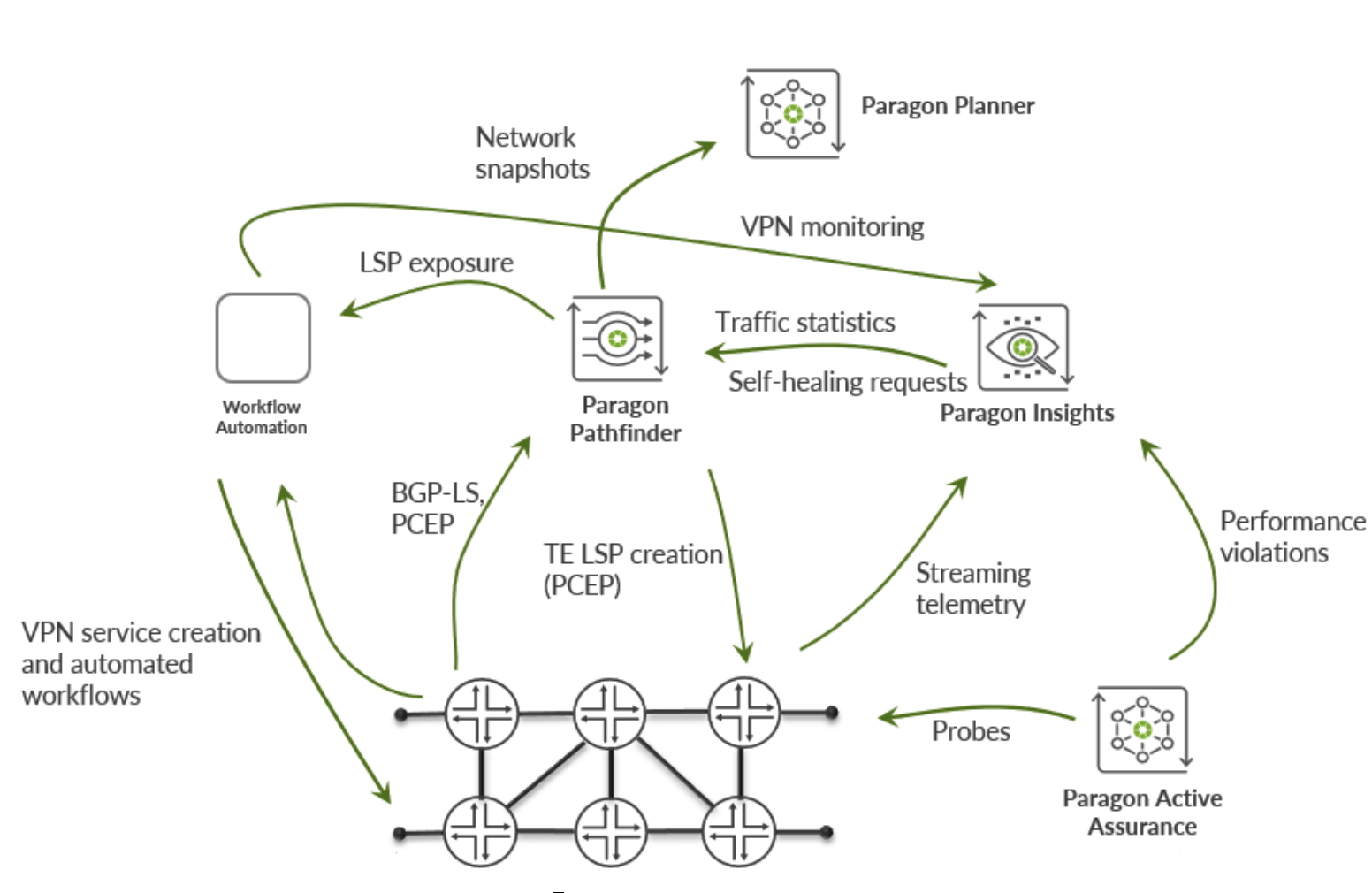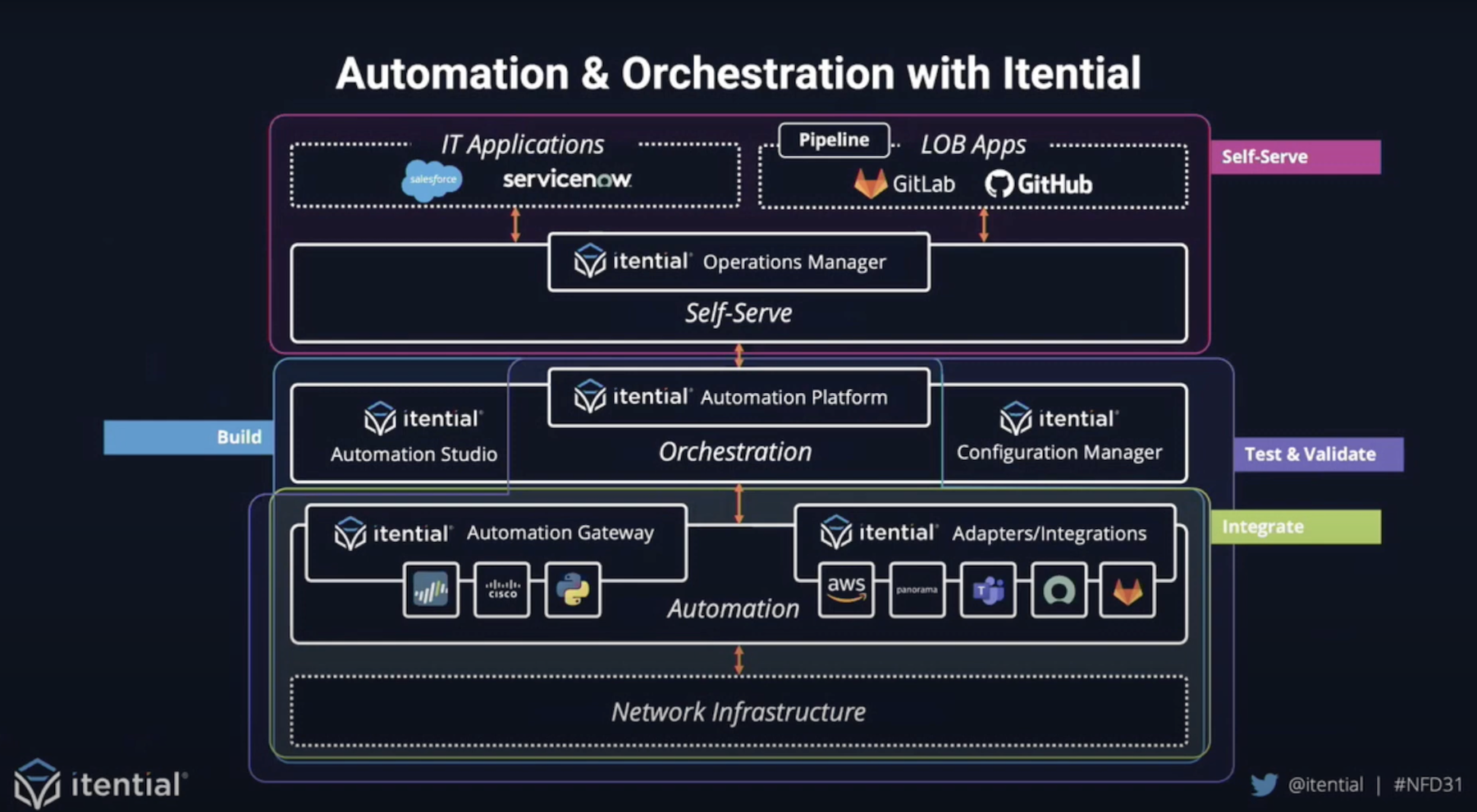MPLS based networks have long supplied network engineers with a great set of protocols to allow convenient end to end service communication, while only having to configure the end nodes themselves, regardless of how many devices lie between them. In addition to configuration convenience, protocols help network engineers manage bandwidth expectations, allowing setting over-subscription levels for links, and requesting bandwidth reservations per service.
MPLS also has tools for redundancy built-in that allow automated calculation of paths and failover for node or link outages. For datacenters, WAN networks, and campus and service provider deployments, this convenience for ongoing service creation and modification is widely availed.
The automation trend also came early to MPLS network deploys for several reasons:
- Increasingly regular new service deployments
- More frequent topology changes via adding and removing nodes
- General network footprint expansion
As a result, automation offers a compelling value proposition for managing these networks optimally, and reducing the dependency on manual configurations.
Juniper MPLS Automation Solutions
From experience, we know that home grown scripting solutions along with vendor-specific or vendor-agnostic tools exhibit a number of issues. Integrating tools, adapting to new use cases, maintaining and scaling system infrastructure are common issues faced with this approach. Conversely, for MPLS-based networks, the Paragon Pathfinder automation tool from Juniper Networks makes use of the PCEP standard to provide a vendor-agnostic tool for LSP management. Paragon Automation can optimize the planning of, and automate the creation of, LSPs on network devices, as well as expand the ability to control bandwidth and performance across the network devices.
The PCEP standard provides the mechanism for the controller like Paragon Pathfinder to dynamically create LSPs between network nodes. No configuration file change needs to occur on devices at all in this mode. Paragon Pathfinder calculates the needed LSP and communicates this to the necessary devices creating the LSP on the fly.
Controlling the LSP tunnels that transport the data point-to-point on an MPLS network, the Paragon Automation suite adds active and passive monitoring of network performance and link bandwidth utilization (not just the reservation top threshold) to dynamically assign (and re-assign) network paths.
Using the device monitoring statistics, Paragon Pathfinder knows both the maximum possible traffic from an LSP that can be supported by the underlying resources at a given time, and the actually utilized bandwidth per link across the network. As multiple LSP share links and links have an oversubscription rate, there are times when congestion can occur. For priority services the controller can detect the congestion and reroute the appropriate LSP to alternative paths in the network. Paragon Pathfinder has a holistic view of the network that can perform these calculations in a way not possible by RSVP device-based protocols.

Paragon Pathfinder process
For performance, Paragon Automation watches the latency per tunnel via monitoring. Similar to the bandwidth reroute, priority LSPs can be changed to alternative paths to route around latency issues. These capabilities are not available in standard MPLS device-based protocols at all at this time.
These capabilities are perfect for either green field deployments for new networks, or used on new services deployed in an existing MPLS network. This PCEP-based dynamic LSP creation and management works with both segment routing and standard RSVP TE based networks. But even existing brown field MPLS networks with already deployed LSPs can leverage the new bandwidth and performance features.
The PCEP standard includes a delegation option that can be added to already configured and running LSPs on existing MPLS networks. A single configuration line is added to the deployed and work LSP without any performance impact. Once in place the Paragon Pathfinder controller can monitor and change the path of the LSP. This delegation feature allows operators of existing networks to add the bandwidth and performance monitoring and rerouting to all the existing deployed services. Even the existing service deployment software, scripts or other operations can remain in place deploying new services as usual. Paragon can use Netconf or SSH from the service to deploy the delegation configuration to network devices without any operational changes needed by existing systems or scripts.
Paragon Pathfinder provides a robust PCEP controller allowing for the deploy, monitoring and dynamic control of the LSP transporting bandwidth on the MPLS network. This is also part of a suite of tools with broader capabilities in monitoring end-user service levels, providing network simulation, and network service automation platforms.
Conclusion
Managing a dynamic MPLS network presents operators with multiple challenges. Making changes and adding services while also monitoring traffic levels and performance require more than just device and protocol level knowledge in the network. Centralized controllers like Paragon Pathfinder provide that system wide view and control to react as changes are required. The additional suite of products can extend the capabilities to maintenance planning simulation, service level performance monitoring and change automation platforms as well. To learn more, review the Autonomous Networks Solution description on Juniper Networks website.
Additional links for further information
Juniper has a useful web page where you can quickly access summary demo recordings of use cases for its Paragon Automation suite, including Automated Congestion Avoidance; Latency based Routing; Path Diversity. You can also find the full Showcase live demonstration that I attended recently, and links to recent case studies for Paragon Automation, including at GARR and Orange Poland. You can find all this, along with commentary from industry leaders like BT and Verizon, and complementary analyst reports from ACG Research, STL Partners, and Appledore, at the below links:




